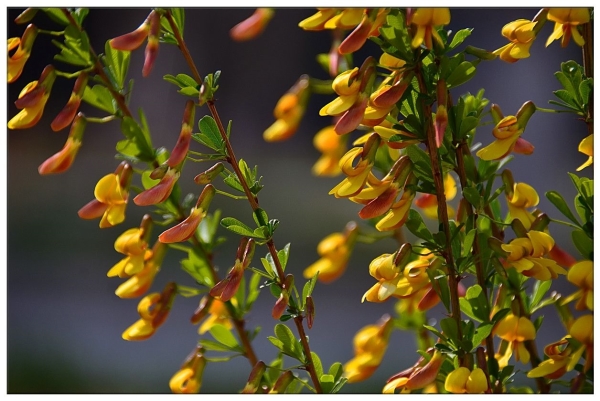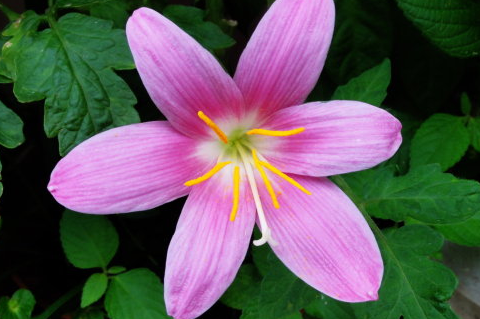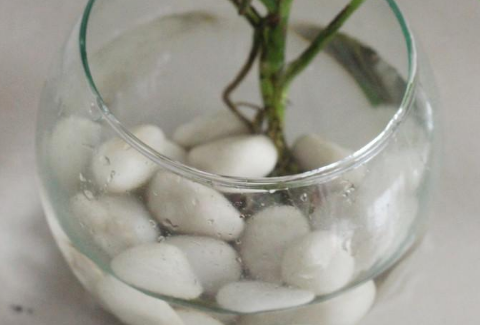The method of making Caragana bonsai
Draw materials
Caragana is generally chosen to make bonsai cuttings or cuttings, because such branches are slender and soft and are easy to be cultivated into potted plants. Or choose graceful old piles for many years, which can achieve the effect of rapid prototyping.

time
Try to dig up Caragana plants during dormancy or rainy season. First cut off most of the aboveground stems, and then go to the soil, according to the growth direction of the roots, carefully dig out the roots of Caragana, pay attention to protect the roots, do not make the roots injured.
Upper basin
First, put the Caragana dug up in a semi-shaded place, wait for the root to be slightly dry, and then carry on the dish shape, which is used to replace the dry with the root, and then plant it in the pot. do not wet the root plate, otherwise it is easy to break. In this way, the roots are intertwined and pleasing to the eye.
Modeling
If we want to make the bonsai of Caragana look more beautiful, we can properly shape the main branches, and the twigs are mainly pruned to make them vary. Arrange the root system, wrap it around each other, or properly climb it with brown silk to make it show the beauty of the root.
If you want to make the bonsai shape of Caragana look more beautiful, you should pay more attention to maintenance at ordinary times.
How to make Caragana bonsai the method of making bonsai
Caragana is a deciduous shrub of the genus Caragana of Leguminosae. How can Caragana make bonsai? Let's take a look at the method of making Caragana bonsai.
1. Materials: the materials for making Caragana bonsai can be propagated by feasible sowing, cutting, ramet, striping and other methods. It is best to sow Caragana with picking and sowing, such as dry storage, soaking seeds to promote germination before sowing in the next spring.
Caragana cuttings can be hardwood cuttings from February to March, or tender wood cuttings in the rainy season. The cuttings are cut into 8-12 cm, and the cuttings are cut to a depth of 1 cm. The cuttings are shaded and watered properly, and the shade sheds are removed after rooting to fully accept light, grow healthily and have a high survival rate. The ramet propagation of Caragana was carried out from February to March in spring.
In addition to cultivating young seedlings, the piles for Caragana bonsai can also be excavated in the mountains for many years to choose piles with vigorous and elegant posture. The mining time can be carried out throughout the dormant period and the rainy season.
2. Upper basin: to make Caragana bonsai, you should first choose a basin. Caragana bonsai basin should be made of round or square purple sand pottery. If it is a cliff type bonsai, it is appropriate to choose a thousand-barrel basin, in order to fully show the roots of Caragana, you can choose a shallower basin.
The second is to choose a suitable basin soil, Caragana bonsai should be neutral or slightly acidic loam or light clay, not alkaline soil, ordinary culture soil or pastoral soil can also be used. Caragana bonsai is best planted in early spring.
3. Modeling: the main branches of Caragana basin can be bent properly, but pay attention to the effect of each side, not only on the same plane. For twigs, pruning is the main method, do not cut the same length, in order to appear uneven.
When changing soil and basin, the twisted and changeable root system of Caragana should be used to arrange the root system, wrap it around each other, or properly climb it with brown silk to make it show the beauty of the root.
How to make Caragana bonsai culture method of Caragana bonsai
Caragana leaves bright green, butterfly flowers red and yellow, florescence from April to May, mainly used to make bonsai, very popular. Down there. Let's talk about how to make Caragana bonsai and how to cultivate Caragana bonsai.
How to make Caragana bonsai
1. Draw materials:
Caragana can be propagated by sowing, cutting, ramet, striping and so on. Sowing is best with picking and sowing, such as dry storage, soaking and sprouting should be carried out before sowing in the next spring; cuttings can be hardwood cuttings in February-March, or softwood cuttings in Meiyu season, cuttings are cut into 8cm to 12cm, cutting depth is 1ppb, shade is built after cutting, proper watering, shade is removed after rooting, shade is removed after rooting, strong growth is fully accepted, and survival rate is higher; ramet propagation is carried out in spring.
In addition to the cultivation of small seedlings, the piles for bonsai can also be excavated in the mountains for many years, and those with good appearance can be selected to achieve the effect of rapid prototyping. The mining time can be carried out throughout the dormant period and the rainy season. The method of mining is to cut off most of the aboveground stems, then remove the topsoil, find out the growth direction of the main root, and dig patiently and meticulously along the trend of the main root, which is beneficial to the protection of the root system and reduce the damage. Dug out the root system is often very long, cultivation can not be short cut, but put it in the shade, wait for the root slightly dry plate shape, used to replace the root dry, and then on the pot planting, do not wet the root disc qu, otherwise easy to break. In this way, the roots are intertwined and pleasing to the eye.
2. put on the basin:
Selection of basin: Caragana bonsai basin is suitable for round or square purple sand pottery basin. If it is a cliff type bonsai, it is appropriate to choose a thousand-barrel basin, in order to fully show the roots of Caragana, you can choose a shallower basin.
Use soil: pot soil choose neutral or slightly acidic loam or light clay, not alkaline soil, ordinary culture soil or pastoral soil can also be used.
Planting: the upper pot should be carried out in early spring.
3. Modeling:
For the main branches can be appropriate bending shape, but should pay attention to the effect of each side, not only in the same plane bending; for twigs are mainly pruned, do not cut the same length, in order to appear uneven. When changing soil and basin, the twisted and changeable root system of Caragana should be used to arrange the root system, wrap it around each other, or properly climb it with brown silk to make it show the beauty of the root.
Caragana bonsai shape, only in the Qiu branch, the posture of quaint for the best, can also be made into branches and leaves profusion drooping trend; or root exposed claws, show its old state, or cut branches and leaves, showing a cloud, in order to achieve the effect of beautiful flowers.
Culture method of Caragana bonsai
Caragana basin is light-tolerant and drought-resistant, and should be placed in a place with plenty of sunshine and smooth air. Winter is also relatively hardy, the area south of the Yellow River can overwinter outdoors, it is best to be buried in the soil even in the basin. Watering should master the principle of "no dry, no watering, watering thoroughly", especially in the flowering period, we should keep the basin soil moist and prolong the flowering period. Liquid fertilizer can be applied once in dormant period in winter; liquid fertilizer can be applied once before flowering in spring to prolong flowering period; after flowering, topdressing is applied again to promote the growth of branches and leaves, and a proper amount of thin fertilizer is usually applied.
Caragana can apply liquid fertilizer once in dormant period in winter, once liquid fertilizer before flowering in spring can prolong flowering period, and after flowering, apply topdressing again to promote the growth of branches and leaves, and usually apply appropriate amount of thin fertilizer. After falling leaves in winter, all kinds of branches that affect the shape of the tree can be cut off; after blooming in spring, the branches that have bloomed will be cut short to promote the growth of new branches; in the period of vigorous growth, pruning of long branches can be carried out at any time, and appropriate coring can be carried out to maintain the graceful posture of the tree.
Turn the basin every 2-3 years, the appropriate time is early spring. When turning the basin, we can remove the old soil of 1 stroke 2 or so, replace the fresh cultivated soil, trim the root system, replant, put it in a place of astigmatism, pour water through it, and often spray atomized water to the pile head, and return to normal management after rejuvenation.
The above is for everyone to introduce the Caragana bonsai production method, as well as the Caragana bonsai breeding method, I hope it can help you, more household knowledge please pay attention.
- Prev

Culture method of leek lotus
1. Soil leek lotus has strong adaptability to soil and is suitable to grow in sandy soil rich in humus. two。 The temperature of leek lotus likes the warm environment, the suitable temperature for its growth is 16-28 ℃, it is not hardy, and the winter temperature should not be lower than 5 ℃. 3. The light shines on the leek lotus like the sun, and it is also more resistant to semi-overcast.
- Next

Water culture method of leek lotus
1. In order to better ornamental effect, to choose a beautiful appearance of transparent flowerpot culture, can be in the bottom of the bottle covered with some pebbles and so on. two。 First wash the roots of leek lotus, gently dig the plant out of the soil, shake off the soil, make the root system exposed, rinse with clean water, do not leave soil.
Related
- Fuxing push coffee new agricultural production and marketing class: lack of small-scale processing plants
- Jujube rice field leisure farm deep ploughing Yilan for five years to create a space for organic food and play
- Nongyu Farm-A trial of organic papaya for brave women with advanced technology
- Four points for attention in the prevention and control of diseases and insect pests of edible fungi
- How to add nutrient solution to Edible Fungi
- Is there any good way to control edible fungus mites?
- Open Inoculation Technology of Edible Fungi
- Is there any clever way to use fertilizer for edible fungus in winter?
- What agents are used to kill the pathogens of edible fungi in the mushroom shed?
- Rapid drying of Edible Fungi

